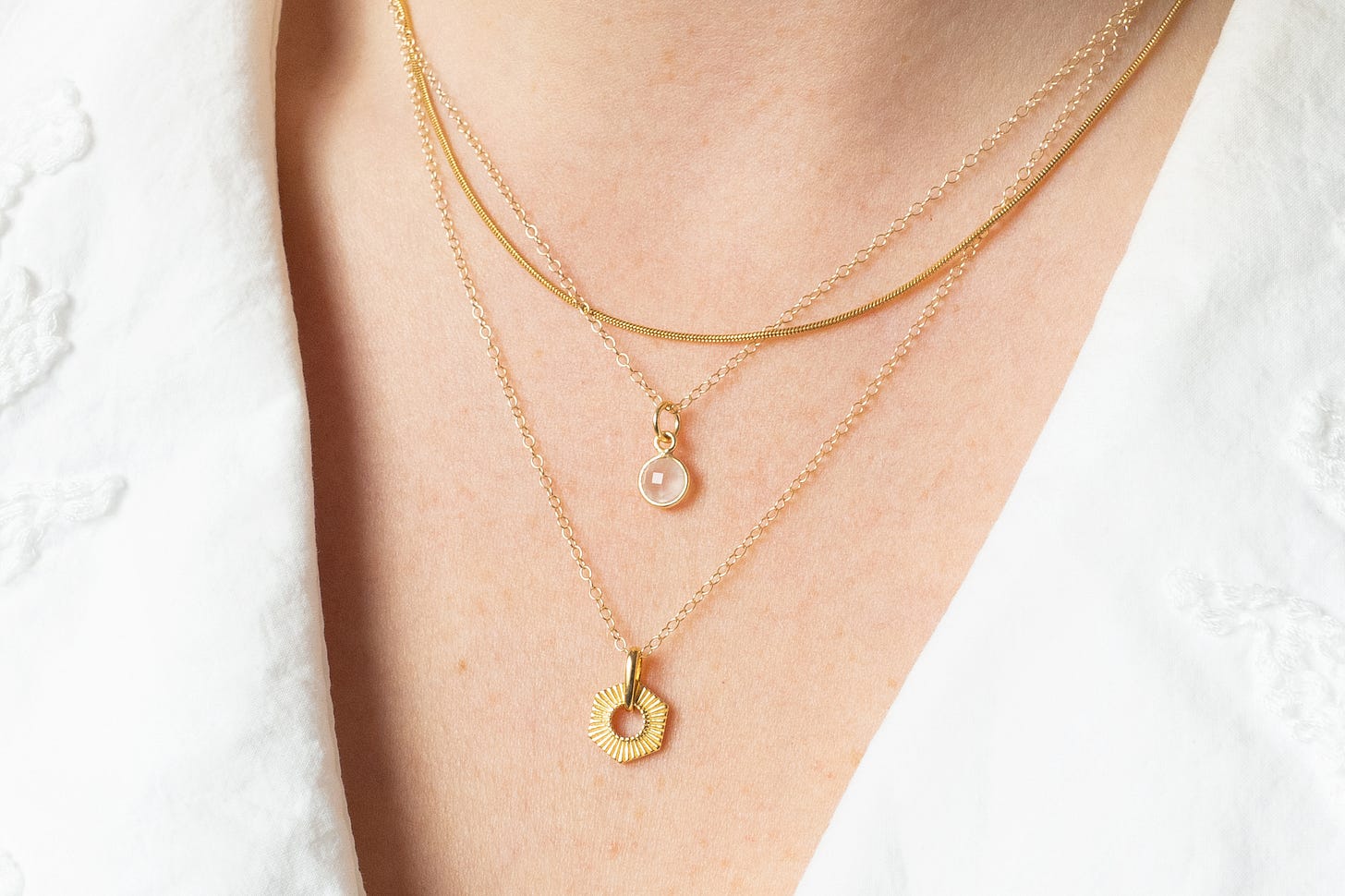Why a No-Buy Won’t Fix Your Wardrobe
If you’re serious about changing your shopping habits and saving money, this is why a 'No Buy 2025' won't help.
When I first started learning about sustainability in fashion and began experimenting with capsule wardrobes over a decade ago, I adopted the so-called "5-Piece French Method." At the time, it was very popular within the capsule wardrobe community and essentially functioned as a partial spending ban.
The idea was simple: every season, you were allowed to buy just five new pieces to add to your wardrobe. The "only" five rule excluded basics like underwear, socks, and other essentials, but everything else—from clothes to bags to shoes—must be counted. The goal was to make better purchases and to create the "perfect" capsule wardrobe.
It didn’t take long for me to realise this spending ban was doing the exact opposite of what it promised. Instead of saving money or reducing the number of items I added to my wardrobe, I was actually buying more! Looking back, I can see how this method subtly encouraged spending. It was my first glimpse into how capitalism was digging its claws into the concept of capsule wardrobes.
With each new season, I found myself gleefully reviewing my wardrobe wish list, already plotting what I could add next. I convinced myself I was being intentional, but in reality, I was just preparing for my next purchase. It wasn’t a matter of “if” I’d buy something—it was “when.” The result was a bloated capsule wardrobe that kept expanding, season after season. Looking back now, I doubt I still own any of those pieces.
I abandoned the 5-piece method before the year was even up and switched to more sustainable, effective habits. Instead of limiting myself to an arbitrary number of items per season, I started only buying things when: a) I genuinely needed them, b) I’d thought long and hard about them, and c) I’d first tried to thrift them first. By focusing on genuine needs and considered purchases rather than rules, I began building a wardrobe that actually worked for me.
That experience put me off spending bans for good. In my opinion, they don’t work—at least not in the way most people use them—and certainly not in the way they’re often promoted.
A spending ban with arbitrary limits on items, rather than a complete stop on purchases, can do more harm than good unless it’s paired with clear goals and a solid plan of what to do once the ban is over. Even a blanket ban has its problems.
If your goal for a spending ban is to develop better shopping habits and build a more considered wardrobe, chances are it won’t deliver the results you’re hoping for—and here’s why:
A Spending Ban Doesn’t Tackle Overconsumption Effectively
A spending ban is like hitting pause on your habits instead of rewiring them. It won't actually help you to shop smarter unless you address the root causes of your overconsumption. Without tackling those underlying issues, it's likely you'll fall back into a cycle of over-spending as soon as the ban lifts.
And if your overconsumption stems from emotional triggers, like stress or boredom, a spending ban won't fix that either. Restricting yourself without addressing these triggers only masks the problem rather than resolving them. Long-term changes requires you to understand and address exactly why you shop in the first place.
A Spending Ban Ignores Genuine Needs
Life doesn’t stop for a spending ban, and rigid rules can prevent you from making intentional purchases that could genuinely improve your wardrobe—and your life. Sometimes, it’s better to buy what you need when you need it, whether that’s replacing essentials or filling gaps in your wardrobe, instead of avoiding spending just for the sake of it.
When the goal is simply “not buying,” you’re pressing pause rather than focusing on thoughtful, strategic purchases. The fear of being tempted to spend can prevent you from identifying what’s missing in your wardrobe or buying items that make your outfits more versatile and functional.
A Spending Ban Encourages an All-or-Nothing Mindset
Spending bans often focus on short-term restraint rather than encouraging long-term change, making it harder to build a more sustainable relationship with shopping. The result is a vicious cycle of restriction followed by overspending, undoing any progress you’ve made.
Instead of building healthier habits, a spending ban might leave you feeling much worse than you did before and far less motivated to make meaningful changes in the future. Building a balanced approach to shopping takes much more than just hitting pause on spending for a few weeks; it requires learning habits that actually benefit you.
The No-Buy Effect
Spending your money thoughtfully will have a far greater positive impact than imposing a blanket spending ban ever could.
Angharad makes an excellent point about how spending bans hit small businesses the hardest. When budgets tighten, the first brands people tend to cut out are the small independents rather than the big-name giants. The reality is, those big brands won’t even notice you’ve stopped shopping with them. But for small, local businesses the impact can be devastating.
Last year was brutal for small businesses—I know because I run one! Jewellery often gets overlooked in our wardrobes, seen as a “non-essential,” and it’s one of the first little luxuries people sacrifice when money’s tight or spending bans are put in place.
Now, I’m not saying we should spend money we don’t have. But if we are spending the little we do have, let’s put it towards supporting small businesses rather than major retailers. Without our support, many will be eaten alive by the cost of living crisis.
If we don’t support them, they simply won’t be there anymore. It’s that straightforward. And if we allow that to happen, we’ll be left with a world where big brands—selling overpriced, poor-quality products—dominate everything.







